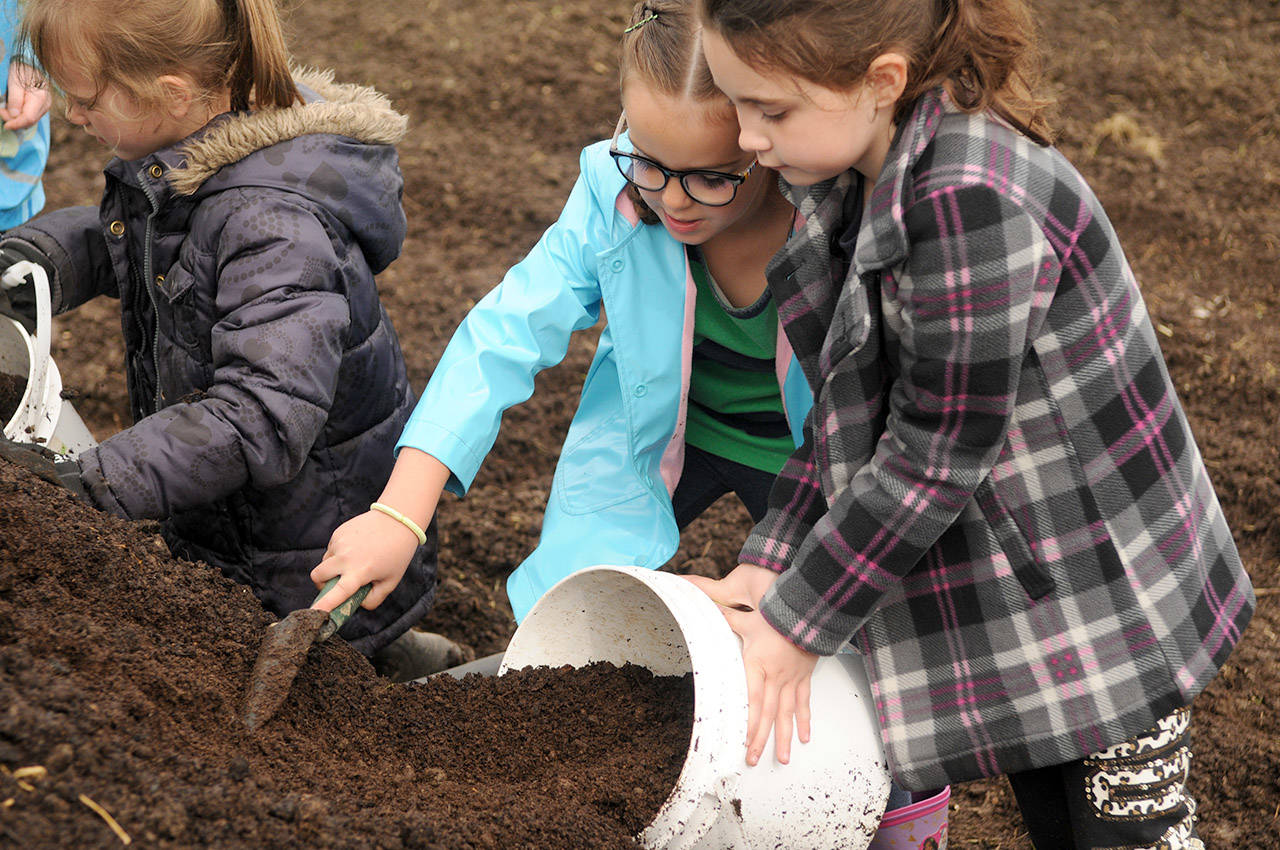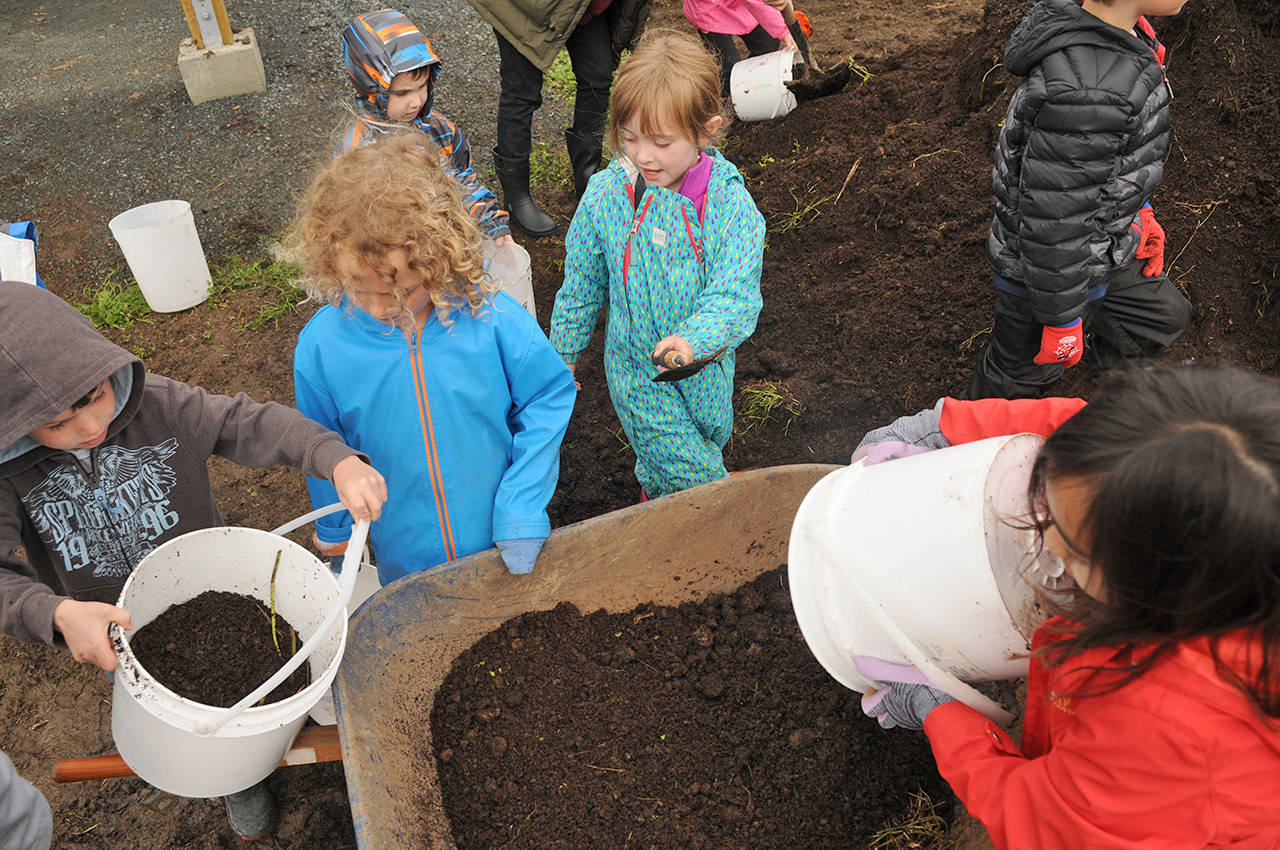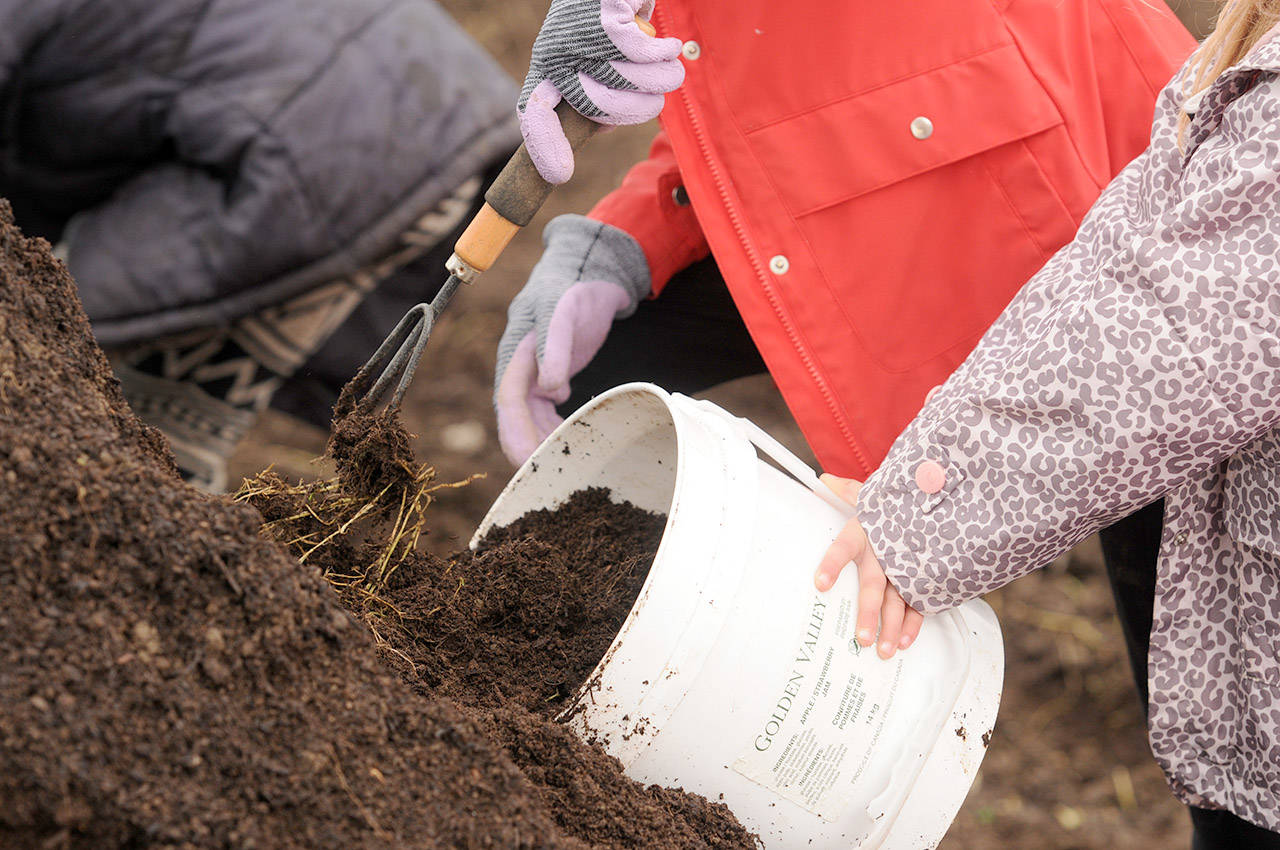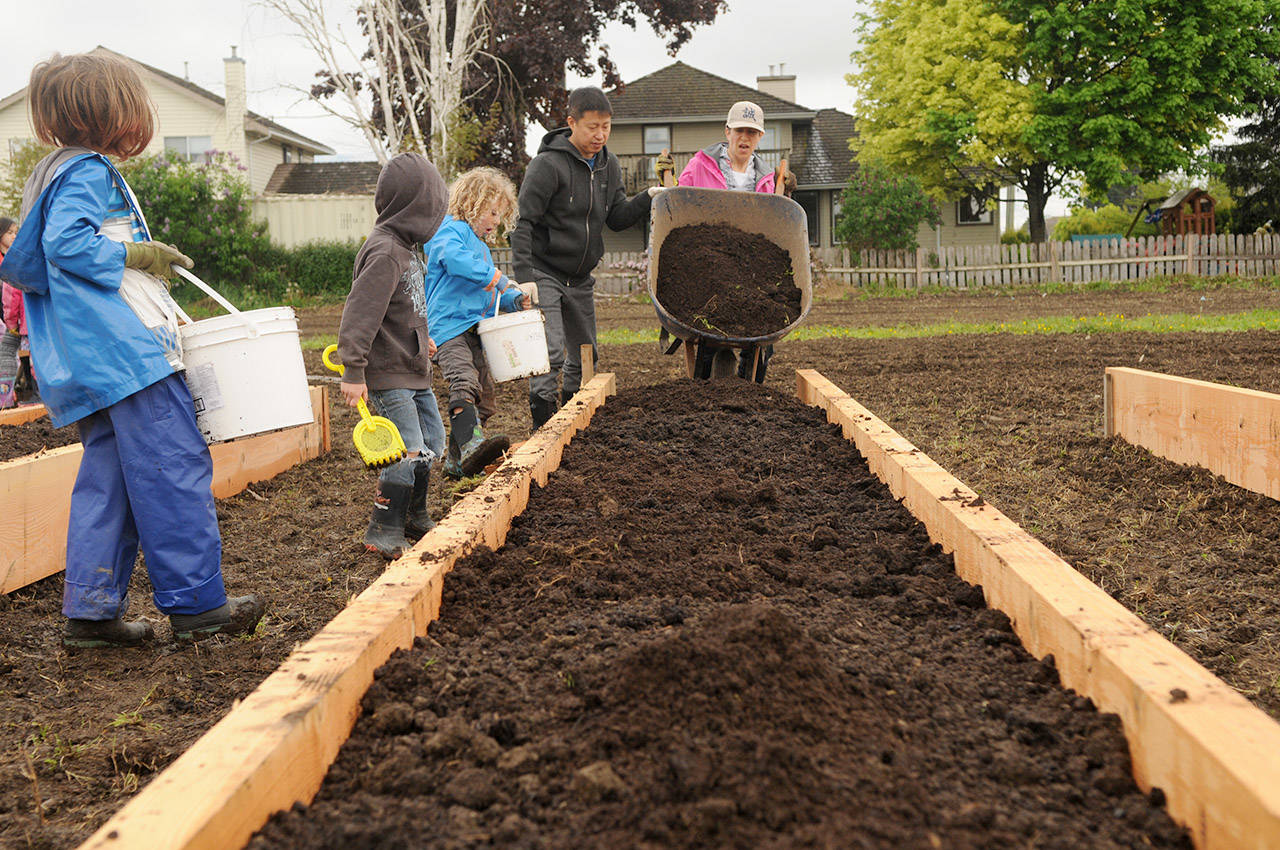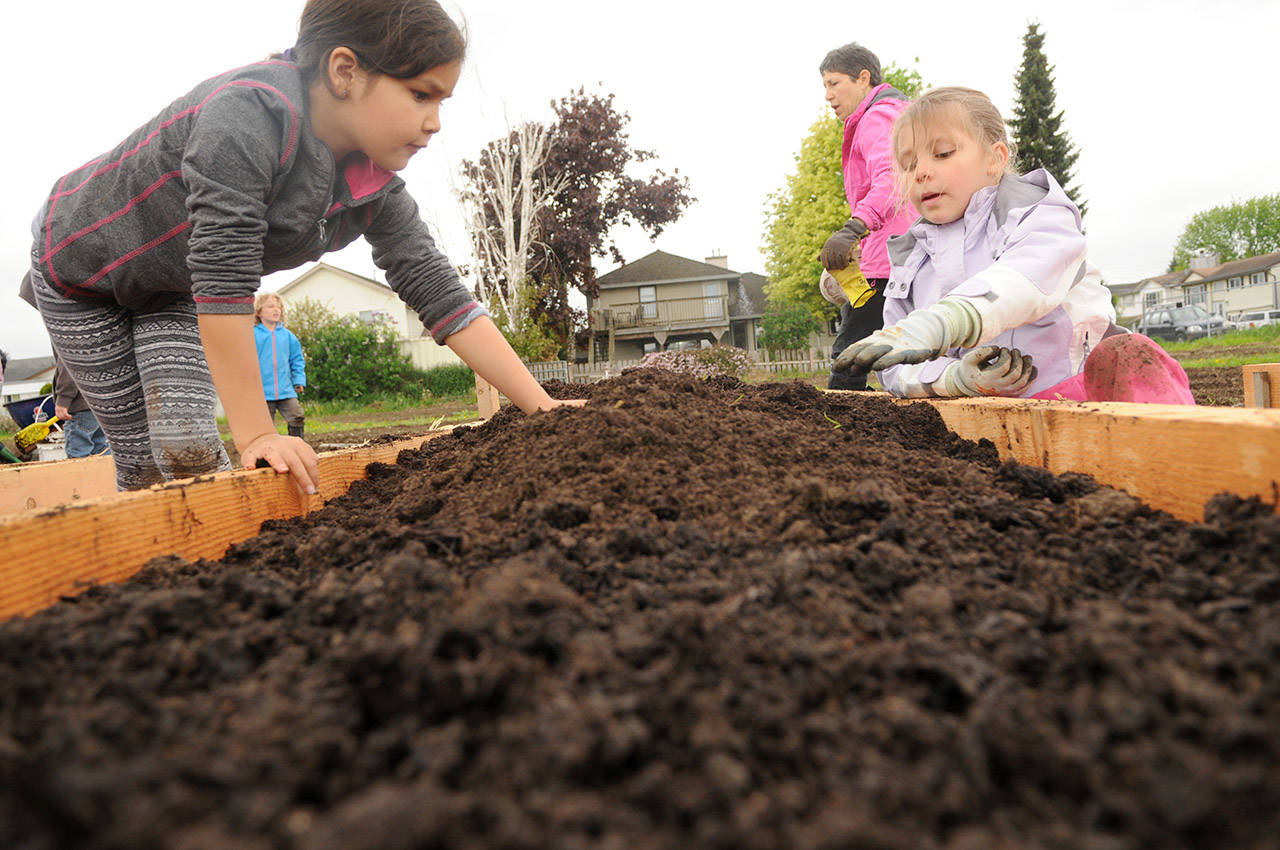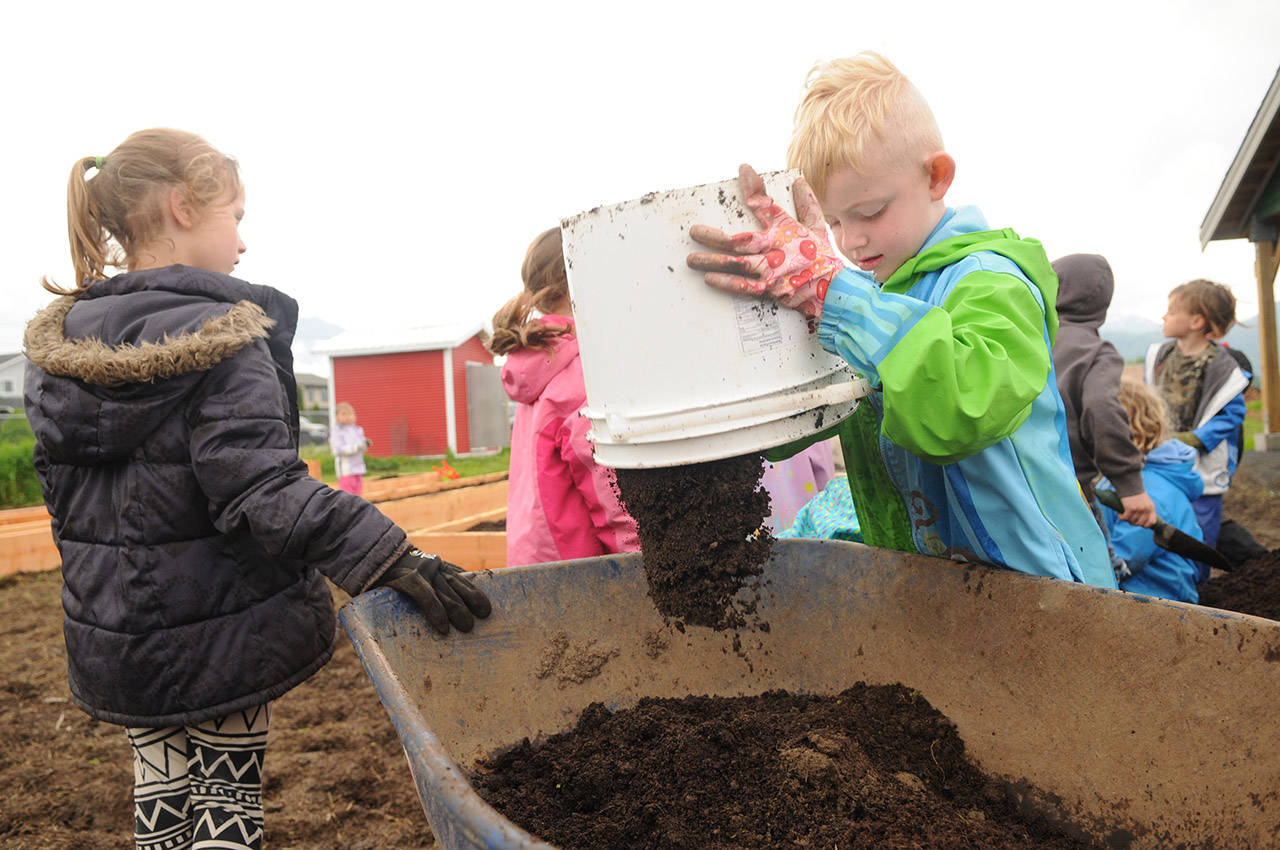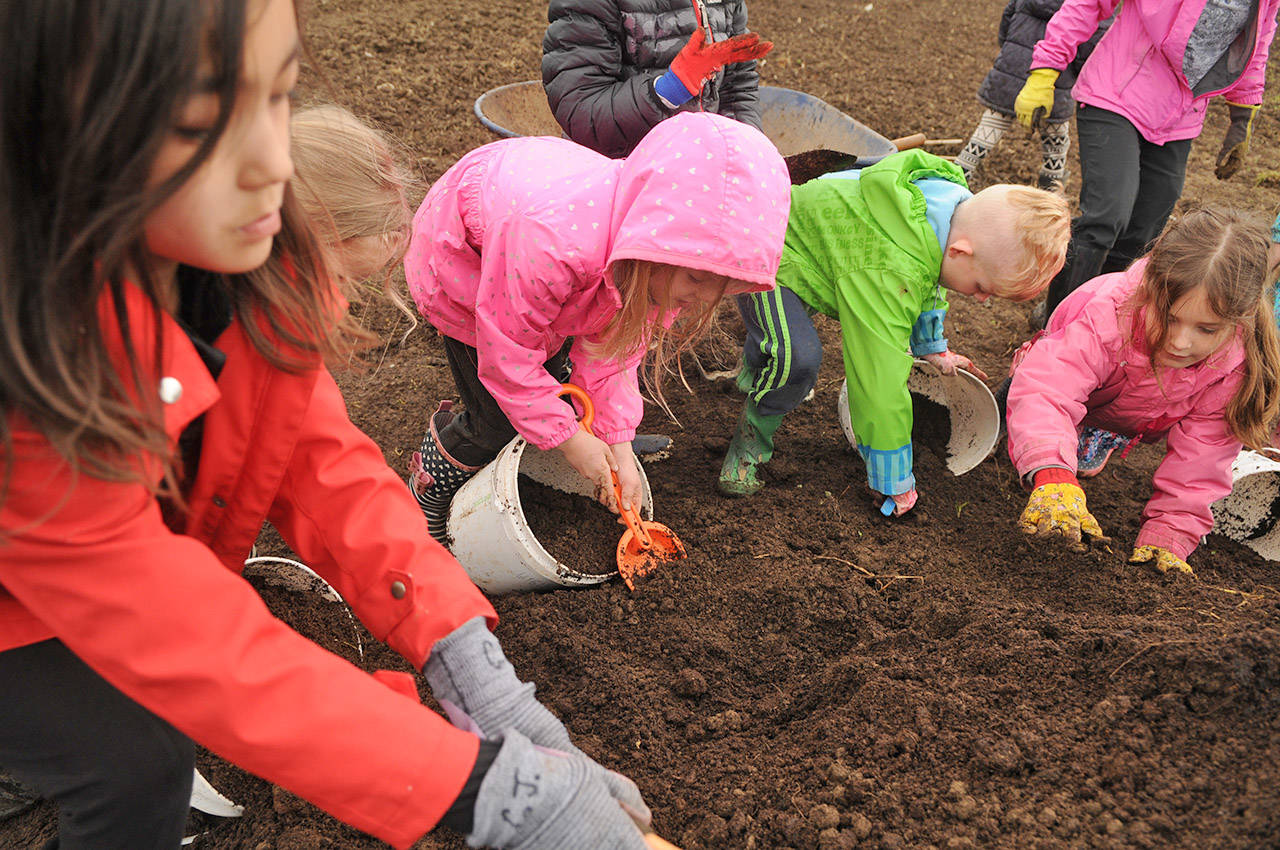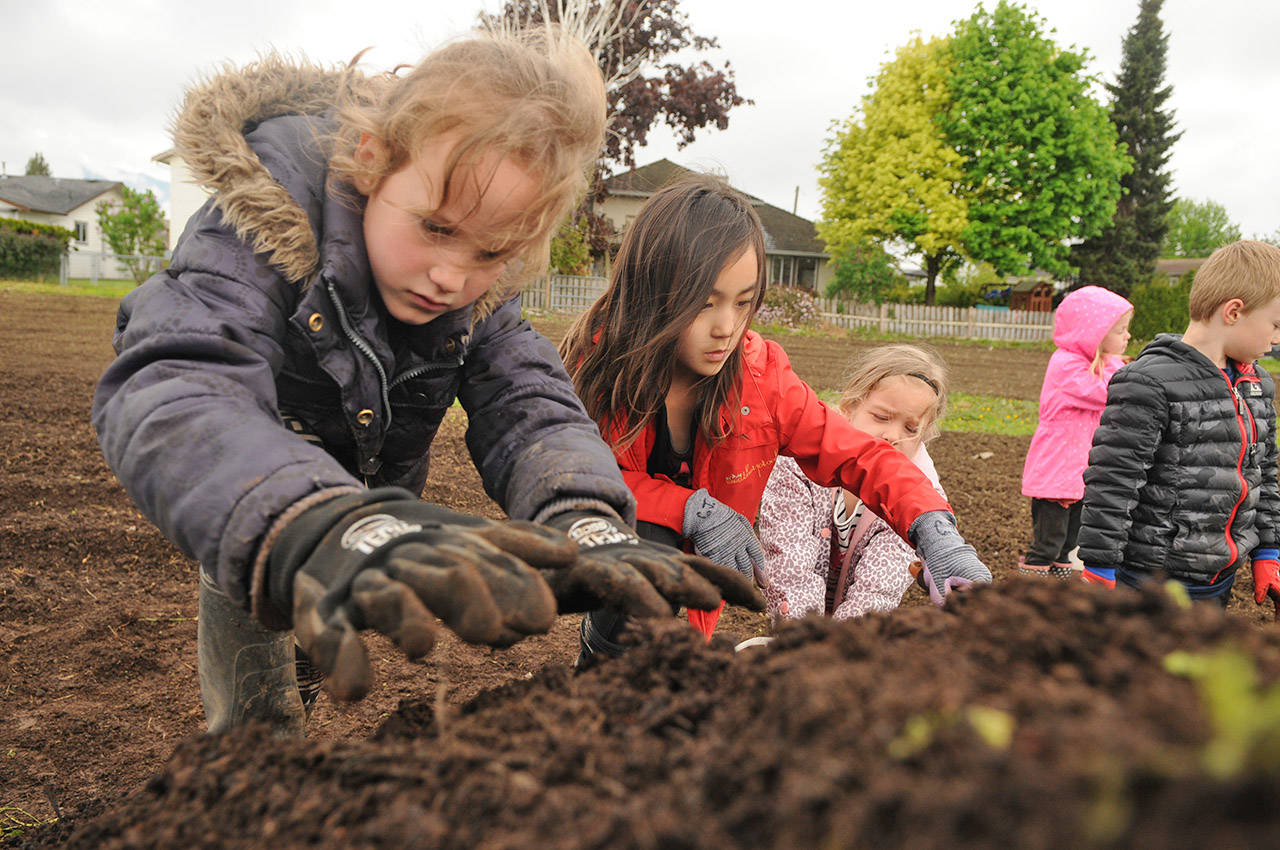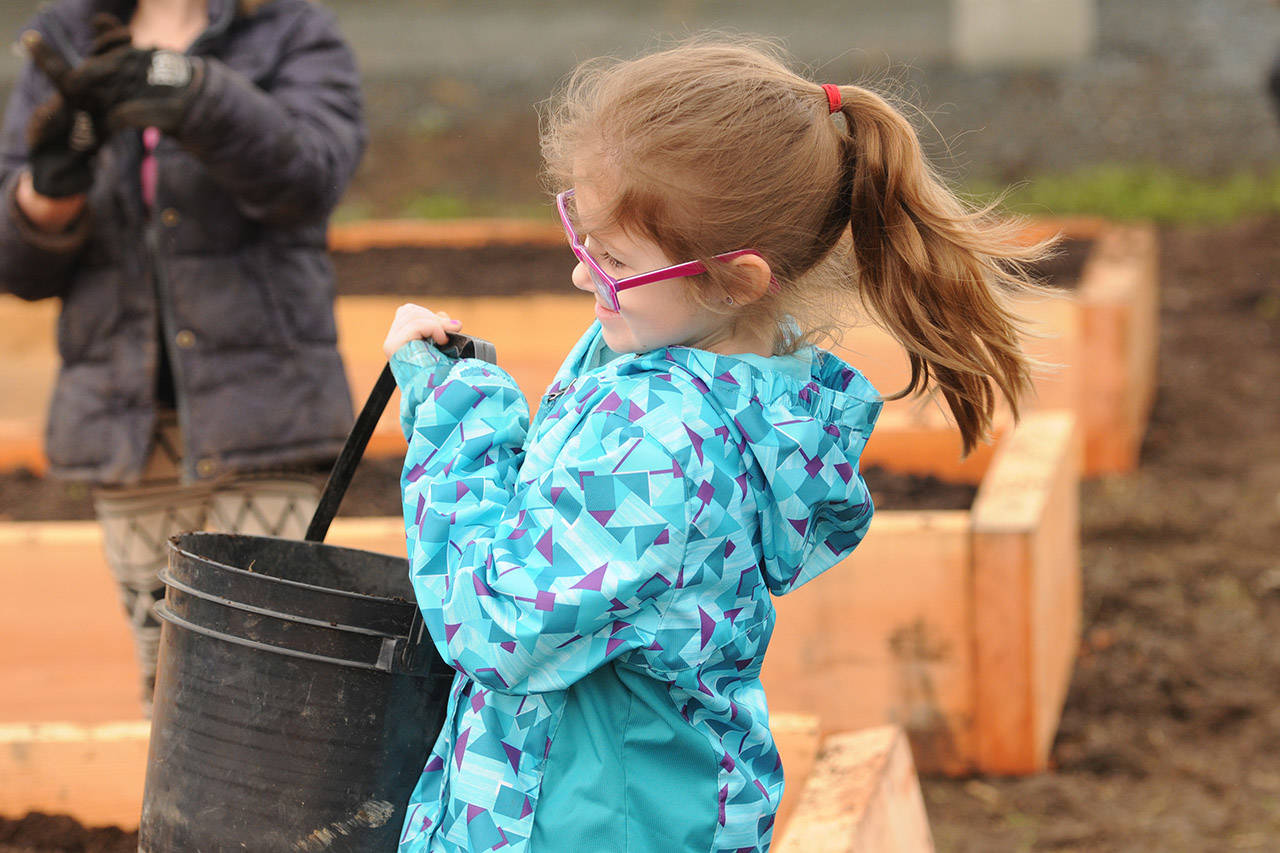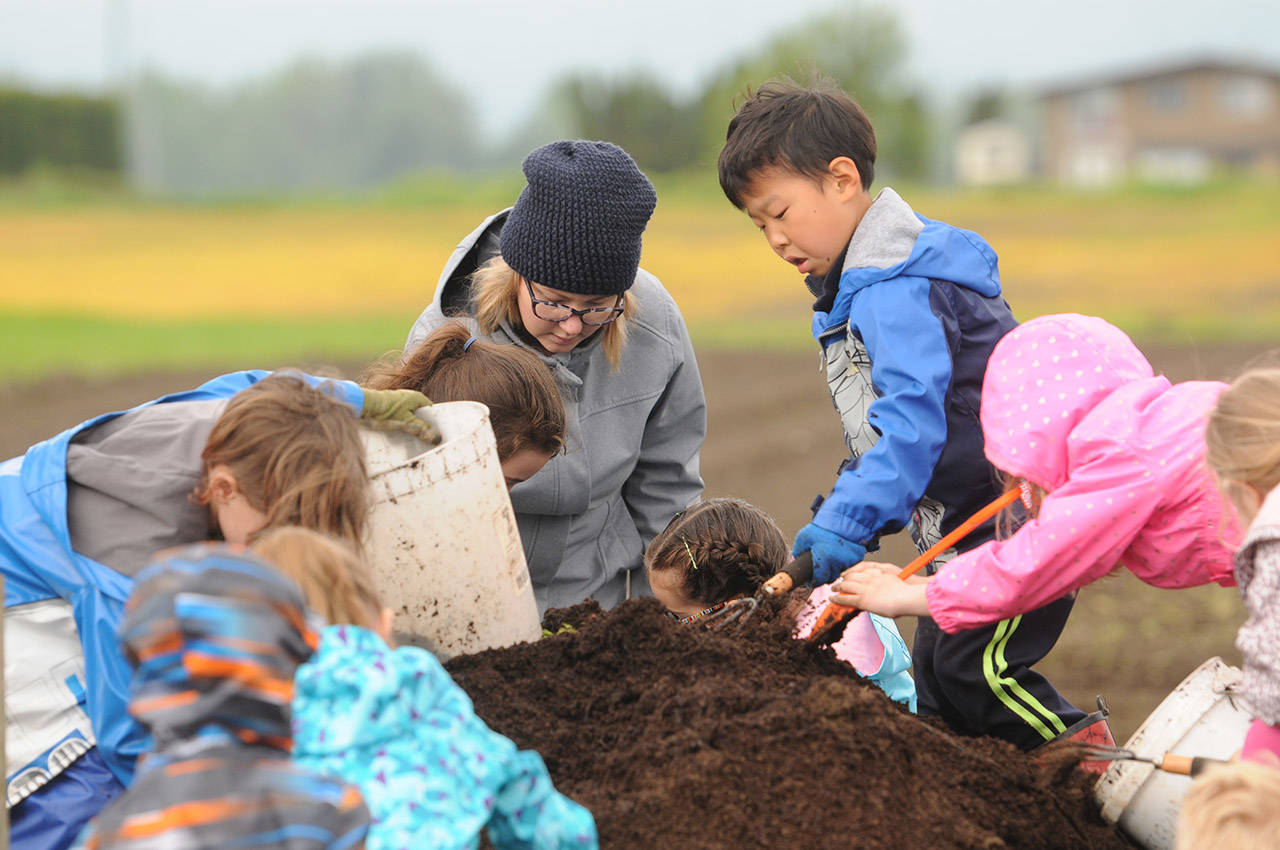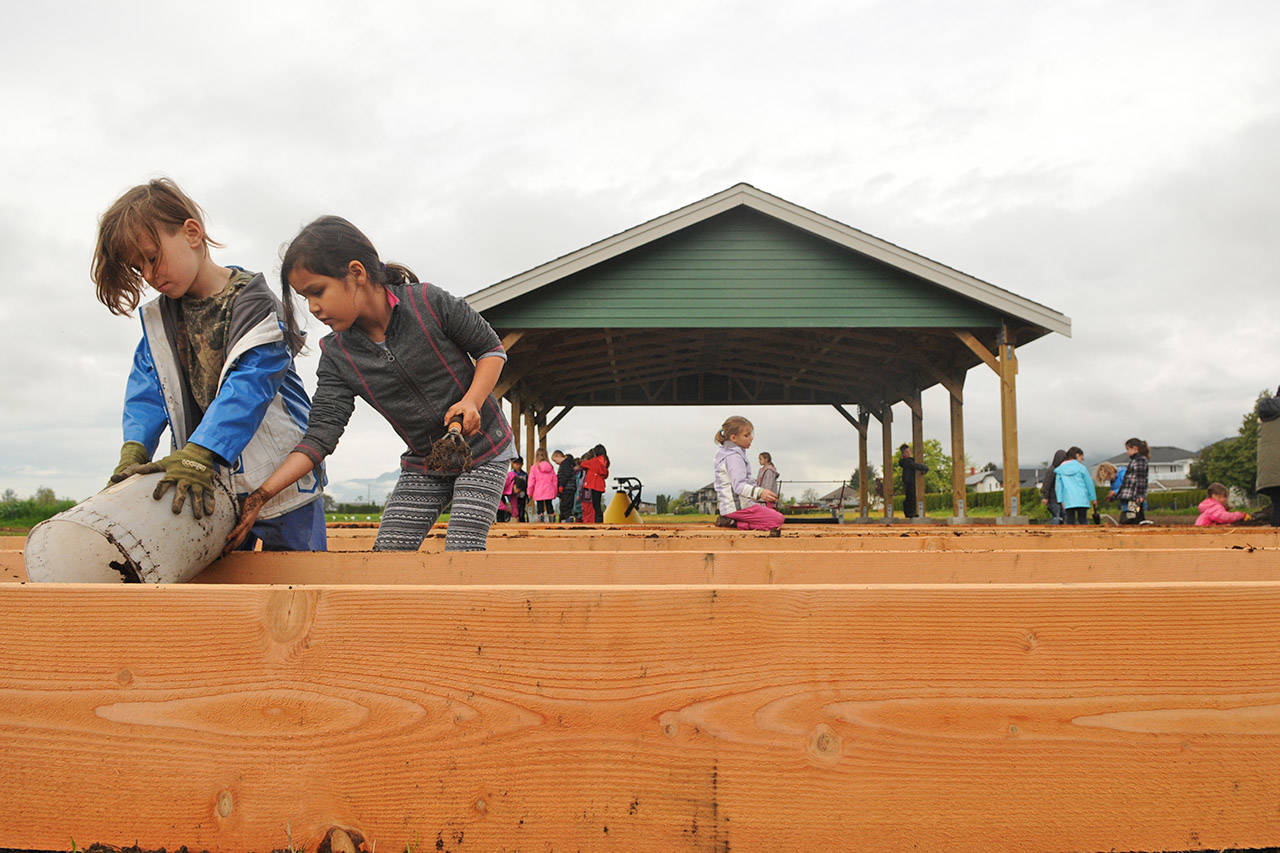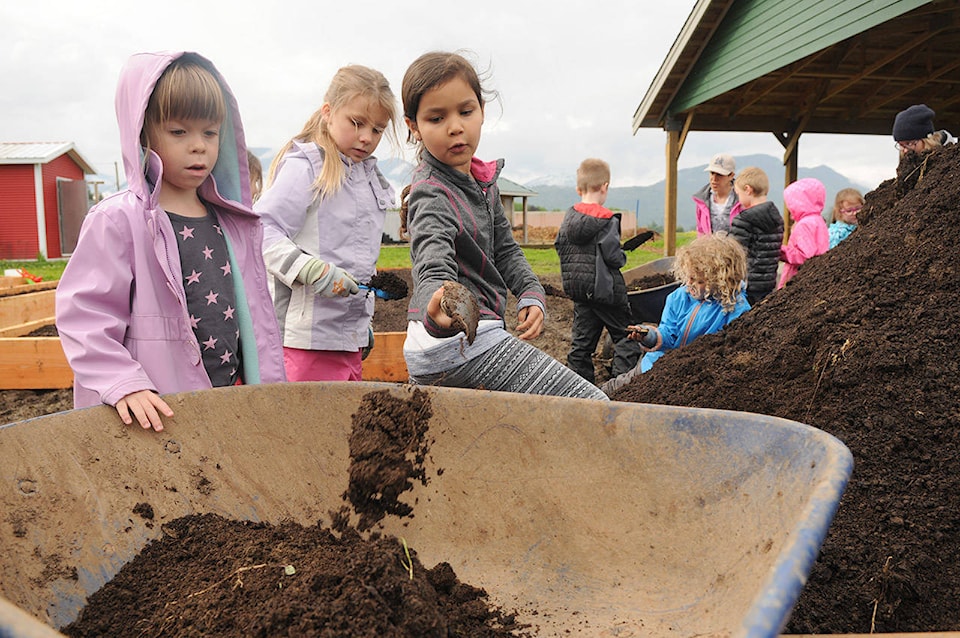More and more students are learning outside of the traditional four walls of the classroom.
Outdoor education and so-called “place-based” learning is becoming a new normal across the province, and here in Chilliwack kids from Kindergarten to Grade 12 are getting their hands in the dirt, seeding and watering, growing and cultivating.
The Sardis Secondary Farm on Richardson Avenue first broke ground in 2015 allowing the school’s annual plant sale to expand into a modest vegetable box program. And since last year, the site has become an outdoor classroom, giving some of the very youngest and oldest in the school district a chance to see where food comes from and how to grow sustainably.
“It’s a total community project,” says Sardis agriculture teacher Tania Toth, pointing to the sponsorship from Murray Honda, Staples, Canadian Tire, as well as Rotary Club helping to build a shed. She has also had expertise from the University of the Fraser Valley (UFV) agriculture program, specifically instructor and farmer Tom Baumann.
Toth is passionate about bringing her secondary students – but also kids from across the district – out of the class, out of the suburbs, to the soil of the Fraser Valley to see how things grow.
And she’s excited to have the little ones involved.
Cheam elementary Kindergarten teacher Marla Gibbs has known Toth for years, and when Toth suggested the farm should become a place-based learning site for elementary kids too, Gibbs jumped on board.
And “place-based” isn’t just a buzz word or a trend, it’s part of the new B.C.-wide curriculum that, according to the Ministry of Education “emphasizes real-world learning experiences, helps students develop ties to their community, enhances students’ appreciation for the natural world, and develops an active, engaged, educated citizenry.”
As a French immersion teacher, Gibbs also relished the possibility of her kids connecting with high school French immersion students merging language with agriculture. When Toth first invited her class and others from Sardis elementary in the fall, Gibbs said the kids loved running around, pulling out carrots and beets and potatoes and whatever else they found.
“So many of my kids who don’t learn as well in the classroom are just thriving with this,” she said.
After that first visit in the fall, she said the kids carried the enthusiasm over for weeks.
“They had vegetables in their lunch boxes over the next few days and they were excited. They talked about how they went home and mom made a soup or dad made a stock,” she said.
Gibbs is also bringing it back into the classroom with fun experiments with vegetables such as putting celery sticks in water with food colouring to see what happens.
They also had magnifying glasses donated.
“We plan on also having the kids go and see what kind of bugs they can find,” she said.
After a long winter, Toth’s grades 11 and 12, along with the elementary helpers from Cheam and also Sardis and Tyson elementary schools, finally hit the farm to get things going. With material donations from Murray Honda – which also donates winter jackets, boots and school supplies for kids in the district – a work bee was organized and raised garden beds were built for the elementary kids.
“Through those other programs we ended up with a little extra funding this year and wanted to give 100 per cent of it back to the school district,” Murray Honda general manager Darren Bosch said.
Gardens and outdoor learning are becoming more common in the school district, and at independent schools such as Highroad Academy where kids are learning to grow food.
At the Sardis Secondary Farm, Toth says the Grade 3 students are buddying up with Gibbs’ Kindergarteners. The high school kids act as leaders to the high school kids, and when UFV students are present, they provide further mentorship. Even master gardener Brian Minter has helped out with his expertise.
The only thing Toth says is missing is a middle school class, but she’d like to get one on board.
With the late spring, things are at a stage they might normally have been at in April, but the students are forging ahead. And when the school year ends, willing families of students take turns week by week tending to the field and the beds, and harvesting the food.
Come September, the farm should be in full production and another school year begins, with another set of kids from K-to-12 learning about agriculture.
@PeeJayAitch
paul.henderson@theprogress.com
Like us on Facebook and follow us on Twitter.
